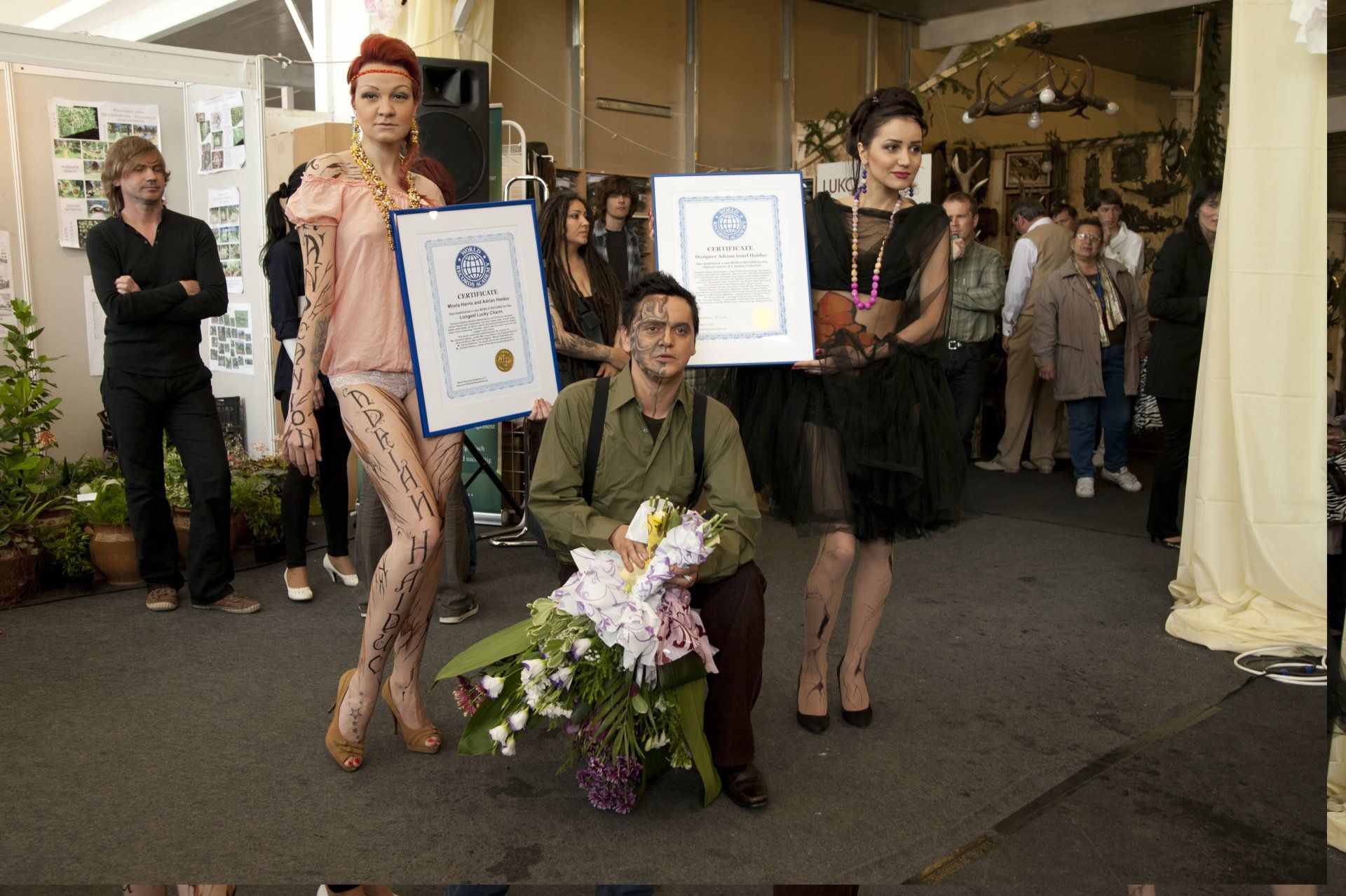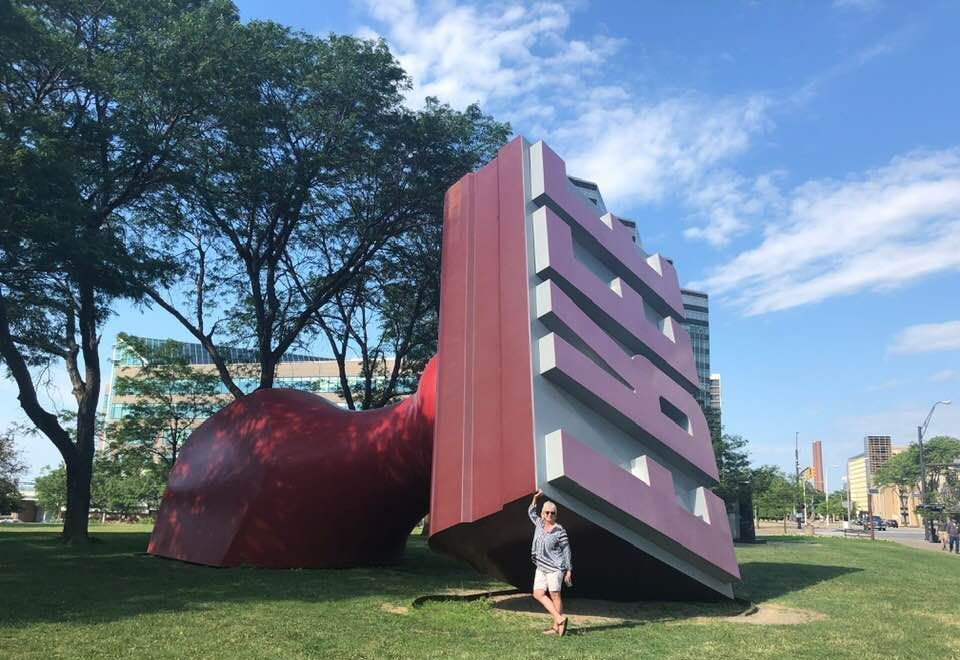World’s Largest Cannonball Concretions: world record in Rock City, Kansas
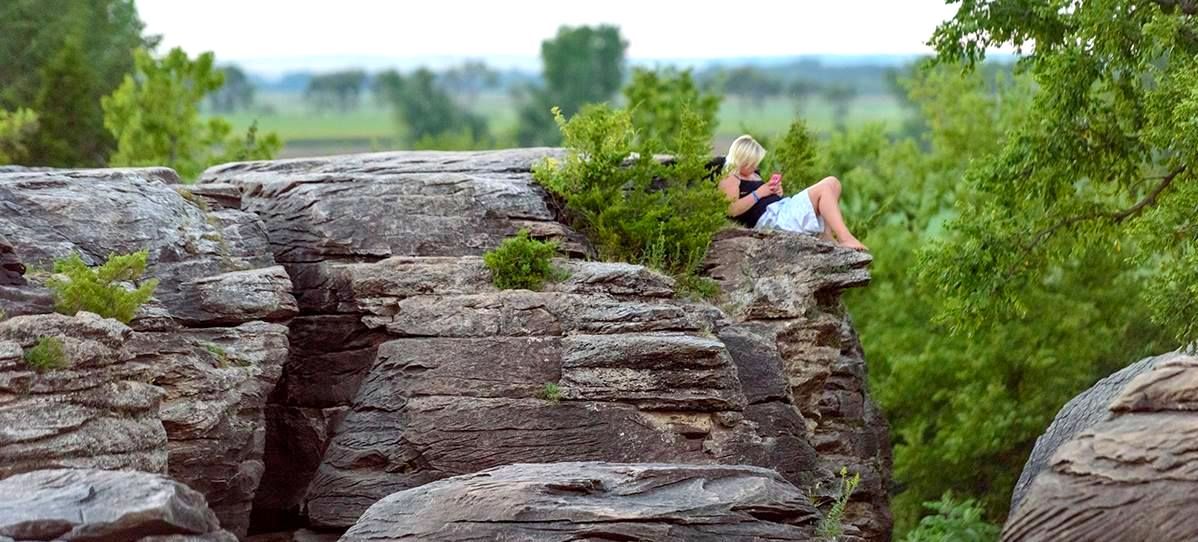
Rock City, Kansas, United States--Rock City, a park located 3.6 miles south of Minneapolis, Kansas, and just over 0.5 mile west of Kansas highway K-106 and the Minneapolis City County Airport on Ivy Road; in a patch of prairie about 500 meters (1,600 feet) long and 40 meters (130 feet) wide, Rock City contains three clusters of large spherical boulders, with a total of 200 spherical boulders, setting the world record for the World’s Largest Cannonball Concretions, according to the WORLD RECORD ACADEMY.
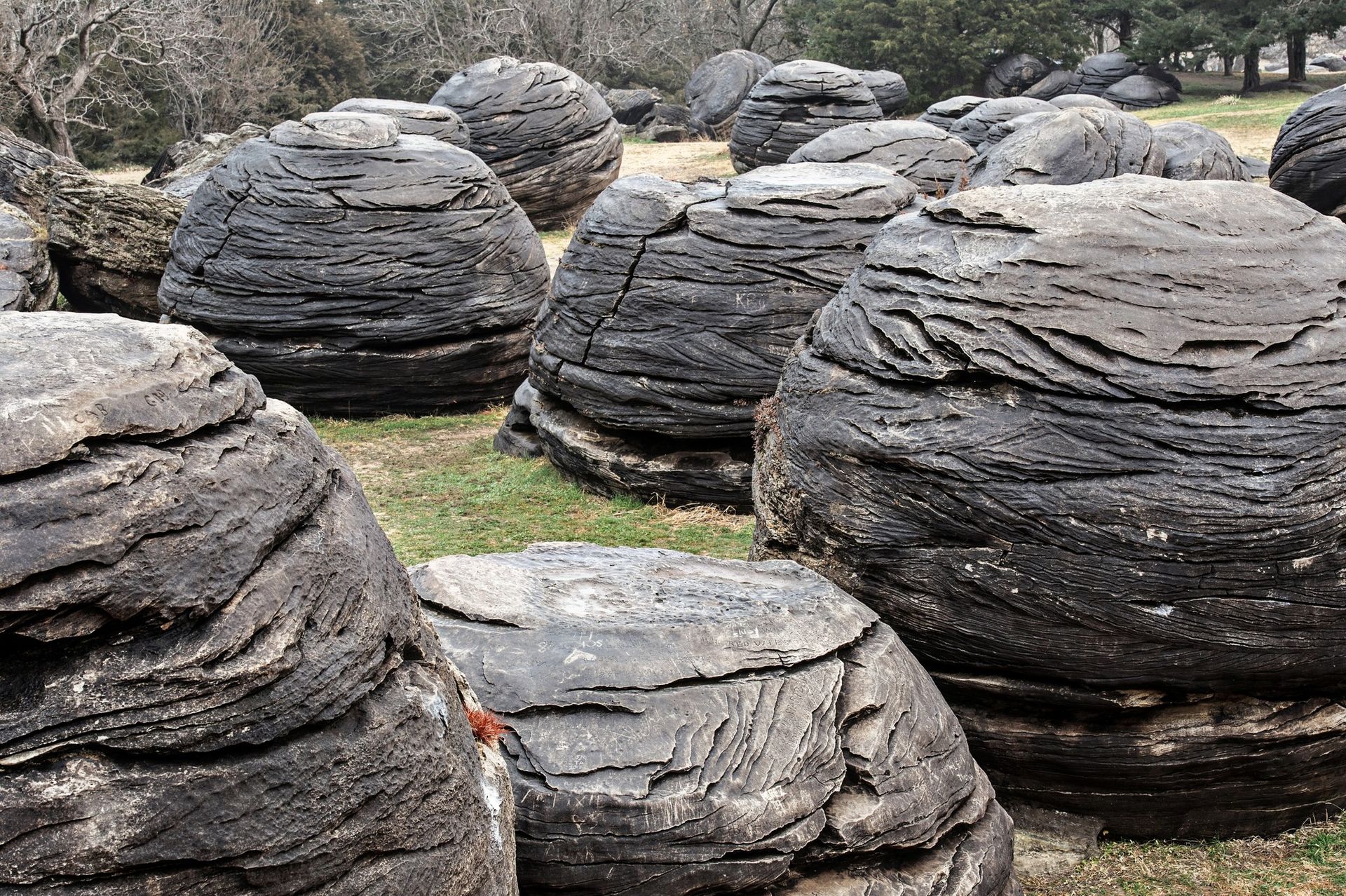
"Kansas is a state with a number of interesting attractions dotted about the state. One of the many hidden gems is Rock City. Rock City is a park containing three clusters of large spherical boulders. These are one of the many interesting landmarks to find around the United States. The Great Plains are often considered featureless and possibly boring, but there are a number of attractions and points of interest to be found around the vast region worth visiting," The Travel says.
"Rock City overlooks the Solomon River in Ottawa County and covered a patch of prairie around 1600 feet or 500 meters long and 130 feet or 40 meters wide. They are very impressive when seen in real life. The boulders are said to be shaped like cannonballs. They range in size from 10 to 20 feet (3 to 6 meters), with the average diameter being 12 feet or 3.6 meters.
"Concretions have long been mistaken for unrelated things like dinosaur eggs. They are hard, compact masses of matter (often sandstone) cemented together. They are often ovoid or spherically shaped."
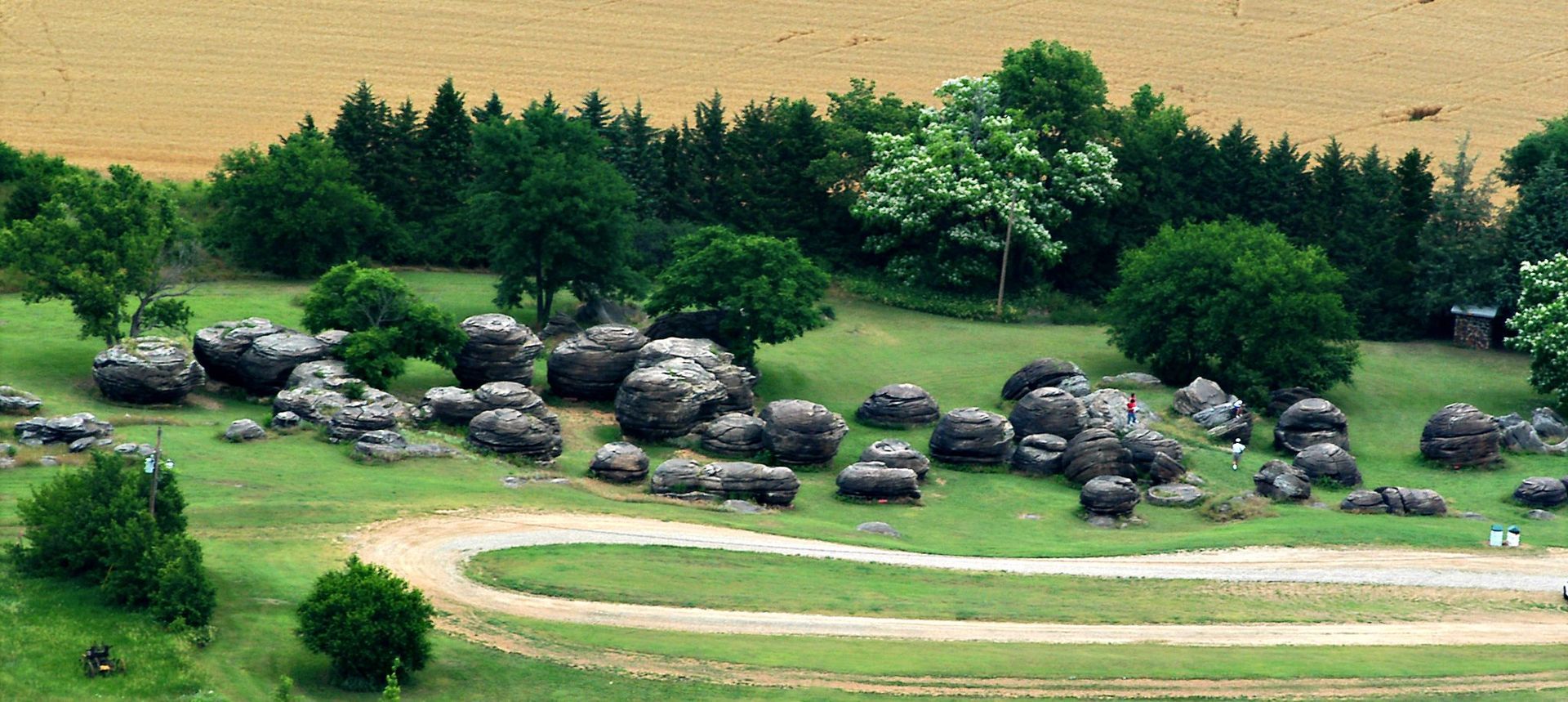
"Rock City is a park located on hillsides overlooking the Solomon River in Ottawa County, Kansas. It is 3.6 miles south of Minneapolis, Kansas and just over 0.5 mile west of Kansas highway K-106 and the Minneapolis City County Airport on Ivy Road. In a patch of prairie about 500 meters (1,600 feet) long and 40 meters (130 feet) wide, Rock City contains three clusters of large spherical boulders. These three clusters contain a total of 200 spherical boulders. It has been designated as a National Natural Landmark.
"The park, owned by a non-profit corporation, has a visitor center and picnic tables. A small admission fee, which is used to maintain this park, is charged.
"The remarkable size and spherical shape of these rock formation was first noted by Bell.[2] Later, these boulders were either noted or described by Gould, Landes, Shaffer, Ward, and Swineford. Shaffer was the first person to map the distribution of these boulders at Rock City and investigate their petrography in detail." (Wikipedia)
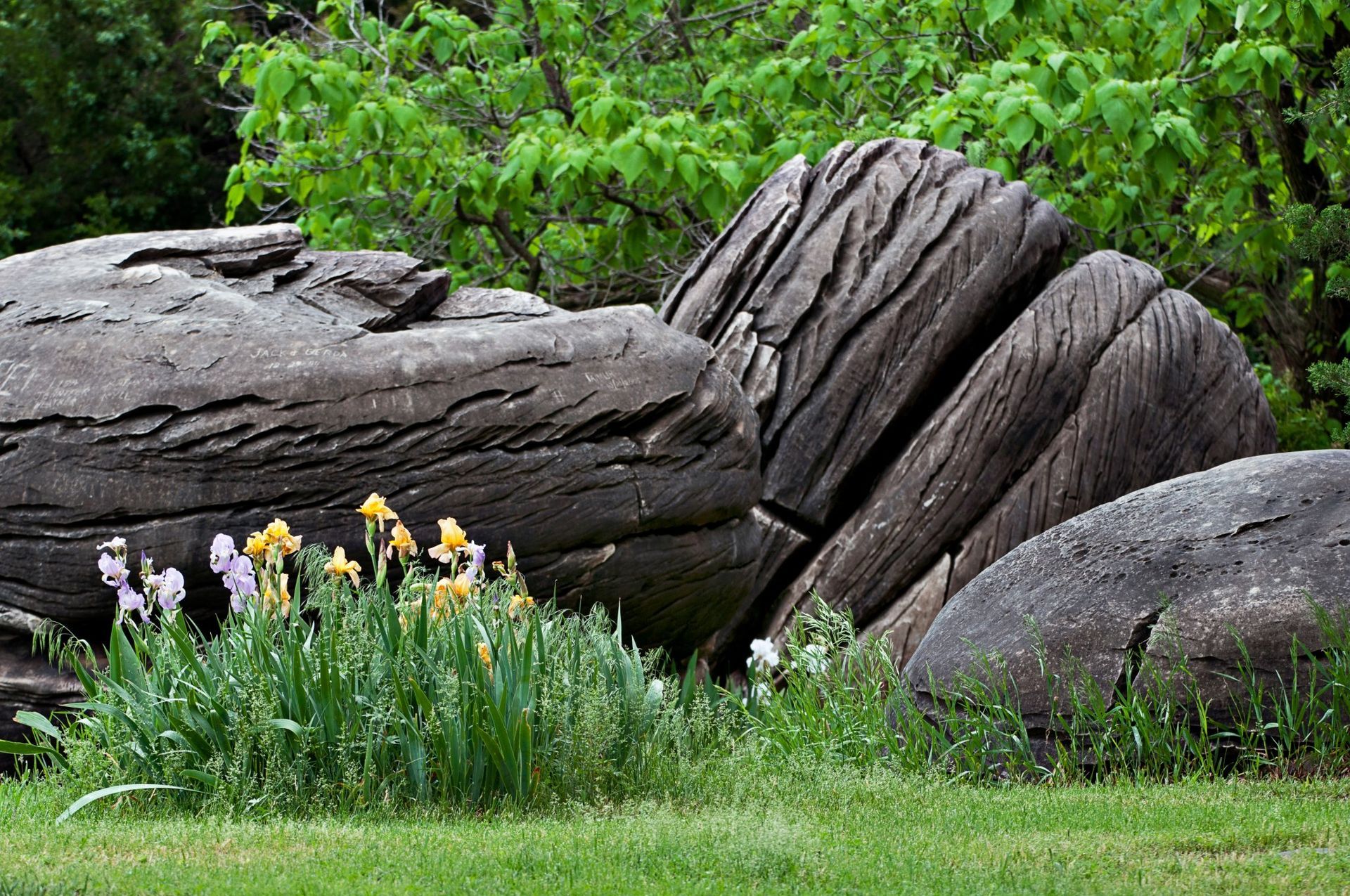
"Rock City in Minneapolis, Kansas is a five acre park which contains about 200 huge Dakota sandstone concretions. The spheres are up to 27 feet in diameter and you are encouraged to climb on them and do pretty much whatever you want. Rock City claims that there is no place else in the world with so many huge concretions," the Kansas Travel says.
"Rock City is 3 1/2 miles south of Minneapolis off Highway 106. There is a small gift shop where Rock City, Inc., the local non-profit corporation that operates the park, collects a $3/adult $.50/children fee. There is a bucket to leave money when the gift shop is closed. Pets are permitted when on a leash.
"Mushroom Rock State Park is a smaller collection of similar Dakota sandstone concretions. The rock beneath some of them has weathered so that a couple of them do look like mushrooms. Mushroom Rock State Park is a free attraction."
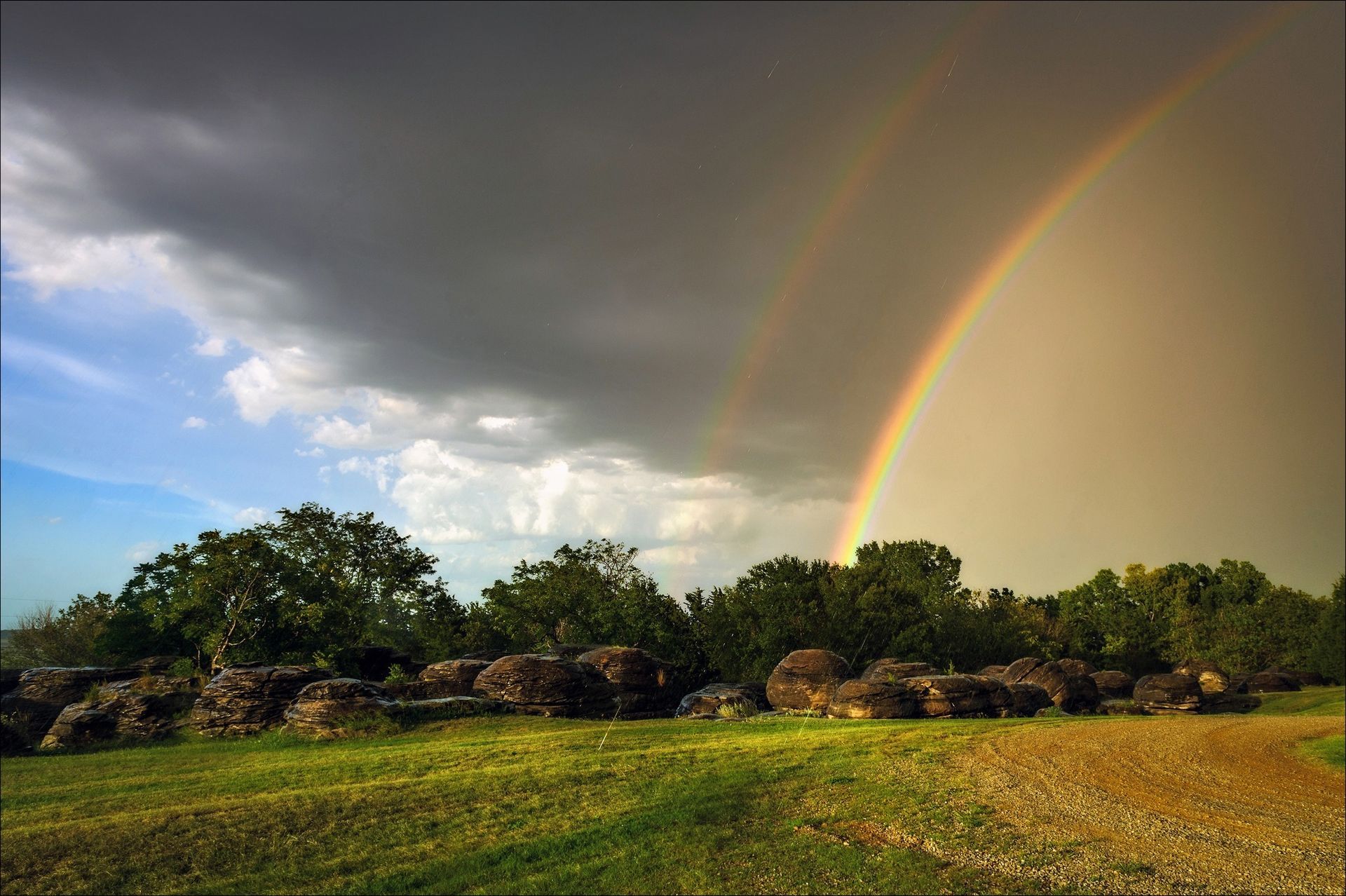
"In an area about the size of two football fields, 200 rocks--some as large as houses--dot the landscape. There is no other place in the world where there are so many concretions of such giant size," a visitor says.
"Owned by a local non-profit corporation, the site is operated as a public park. Open 9AM to 5 PM daily, May 1 to September 1. Admission is $3. /adult and $. 50/child.
"Geologists are in general agreement these concretions were formed millions of years ago of Dakota Sandstone, which was deposited when an Inland Sea covered areas of Kansas."
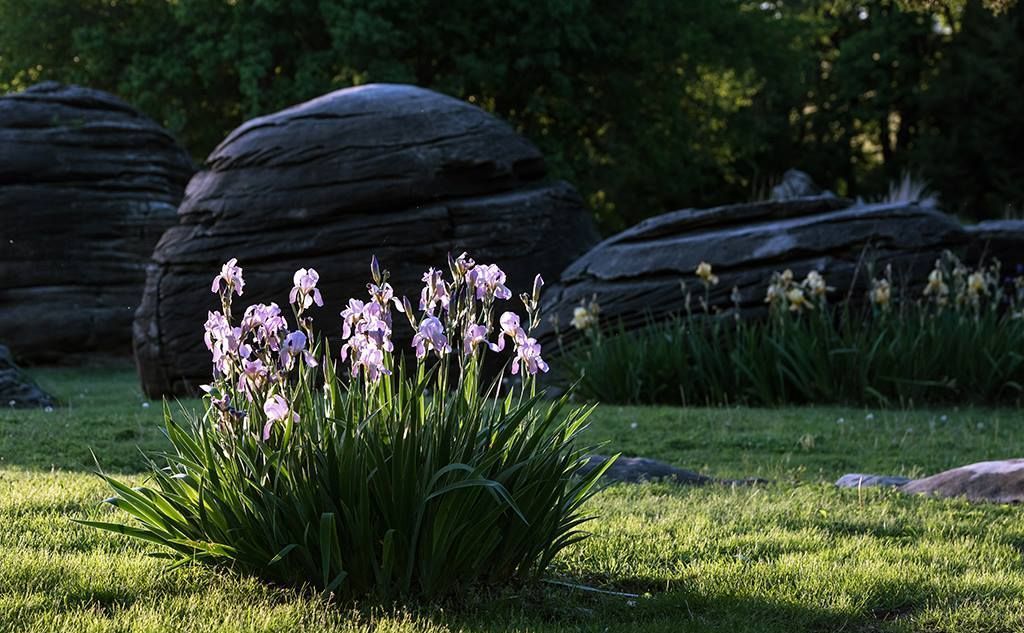
"On a peaceful hilltop overlooking the Solomon River valley in north central Kansas, in an area of cedar trees and bluestem grasses, loom nearly 200 mysterious spheres of Dakota sandstone," The Natural Kansas says.
"These rare concretions, ranging up to 27 feet in diameter, have been designated a National Natural Landmark. This is the only place on Earth to see such a large number of these unique geological oddities. A side trip here is well worth your time. A modest entry fee helps the largely volunteer staff maintain the site.
"The outstanding geology is complemented by the local flora and fauna. The songs of dickcissels and western meadowlarks may be heard along with those of mockingbirds and brown thrashers. Wildflowers such as old plainsman, bracted spiderwort and dame's rocket grow around - and sometimes out of - the boulders."
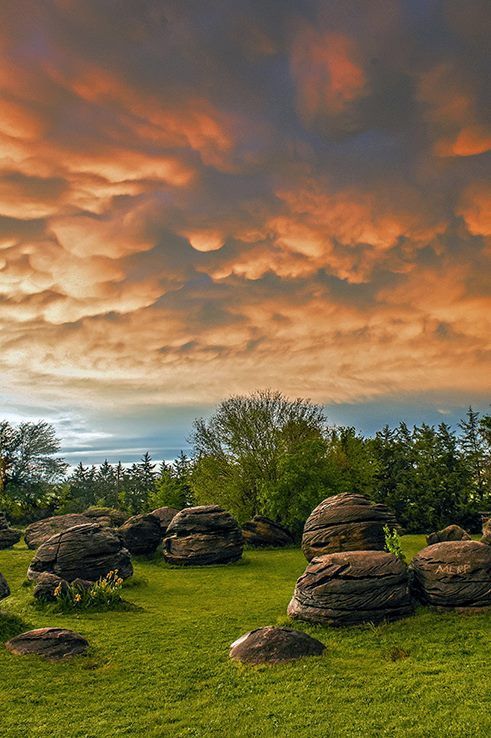
"Coming into existence when parts of Kansas where covered by an Inland Sea, these formations were the product of a type of natural cement. Known as concretion, over millions of years natural concrete binds tiny particles into massive round boulders, forming what are known as “cannonball concretions”, the Atlas Obscura says.
"Originally thought to be corals, glacial boulders, or a handful of other geological phenomenon, the rocks were eventually recognized as calcite-cemented concretions, the softer sandstone eroding away from the calcite cement leaving the banded, free-standing boulders.
"About 200 of the formations are in the 5-acre park, some nearly 30 feet across. The park claims that this is the largest collection of spherical concretions in one place."
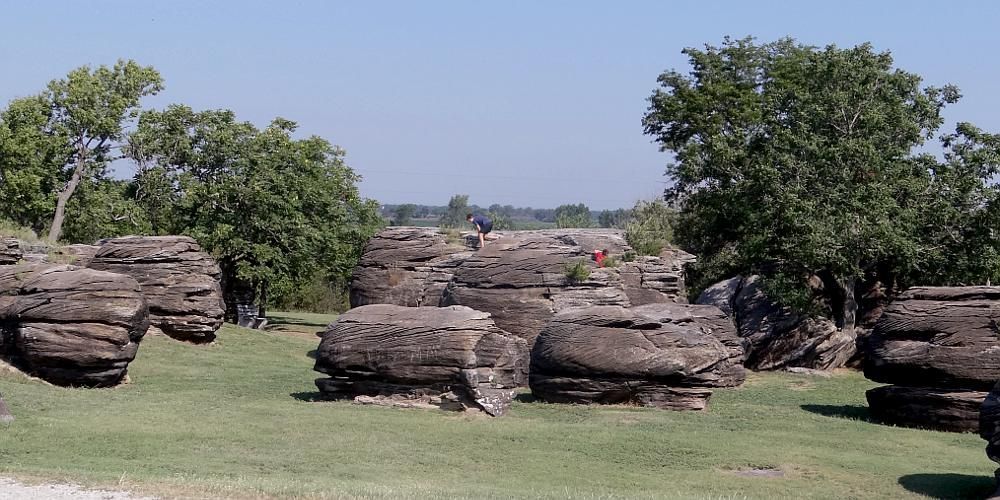
"Huge sandstone spheres ranging up to 20 feet in diameter cover an area roughly the size of two football fields at Rock City, about four miles south of Minneapolis in Ottawa County," the Kansas Geological Survey says.
"Known as concretions, the spheres weathered out of a sandstone layer in the Dakota Formation. The sandstone was formed mainly from sand deposited along the edge of a sea that covered the western half of Kansas about 100 million years ago during the Cretaceous Period.
"Over time, the sand was buried and then compressed and cemented into solid rock. Groundwater circulating through the sandy rock deposited a limy cement in some portions of the formation, making those parts of the rock more resistant to erosion. After the softer, uncemented portions of the sandstone layer weathered away, the cemented spheres were left standing on the surface. An interesting feature of the Rock City concretions is cross-bedding, or angled lines. These lines were likely caused by water currents that molded the sand at the time of deposition."
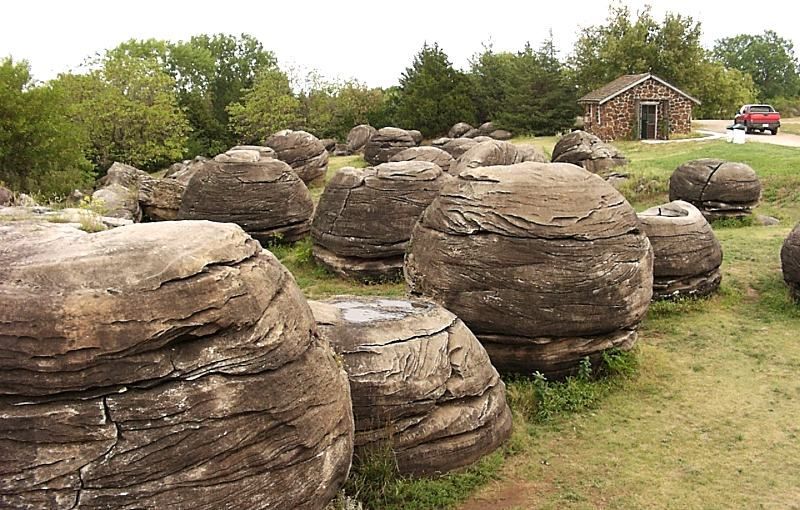
"What are cannonball concretions? Jutting out from the landscape, these large, round stones don’t appear to properly fit into the badlands. The secret lies in the large butte located nearby," the
National Park Service says.
"When mineral rich water seeps down through the porous layers that make up the badlands, it can deposit those minerals in spaces or gaps in the sediments. The minerals act as a kind of glue, holding these sediments together, often forming around a core. As more and more layers are deposited, the concretion builds outward like a pearl, before being exposed by erosion.
"It is illegal to remove any resource from a national park. Leave any flower, stone, or other object where you find it so that other visitors can enjoy it as well. It is illegal to carve, paint, or otherwise alter anything in a national park."
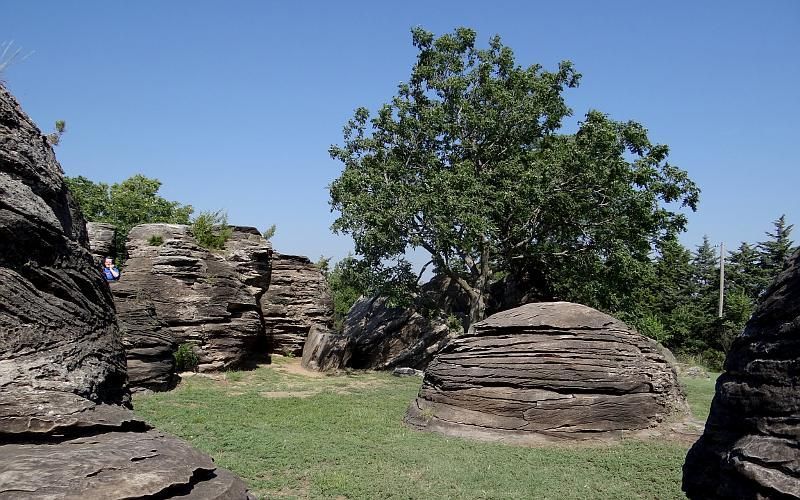
"When they saw Rock City from a distance, pioneers believed they saw resting bison. Instead, they were looking at giant cannonball concretions, the largest in the world. Over 200 of these giant rocks dot the park in three clusters. Some of the rocks are 27 feet wide," the Roxie on the Road says.
"Over 100 million years ago, an ocean covered Kansas. Lime in the groundwater cemented tiny particles of sandstone together over time. The particles continued to adhere to each other in roughly ball-shaped formations. Eventually, the uncemented sandstone eroded, leaving the concretions behind.
"The City of Minneapolis preserves the rocks in a city park. Watch for the wildflowers that grow on the rocks. Bring a picnic lunch.
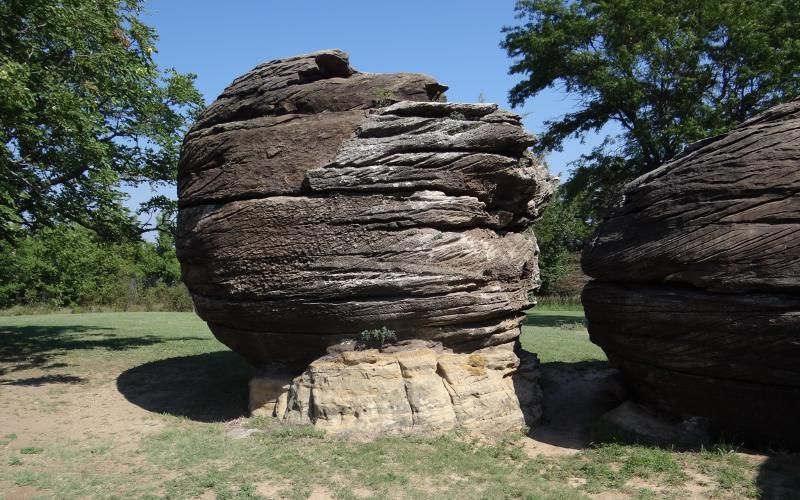
"Ready for some weird Kansas stuff? Let me introduce to you one of the coolest natural formations in the state: Rock City. Pack a lunch and grab the family, these boulders are going to rock your socks off!" the Only In Your State says.
"They were formed from a larger boulder that had lots of harder areas. When weather eroded the softer stone away, it left these round deposits around the original stone.
"As you can see by the man standing on the formations, they're definitely bigger than pebbles. They each range from 10 to 20 feet in diameter, and can easily be climbed by adults and children alike, if you're confident enough."
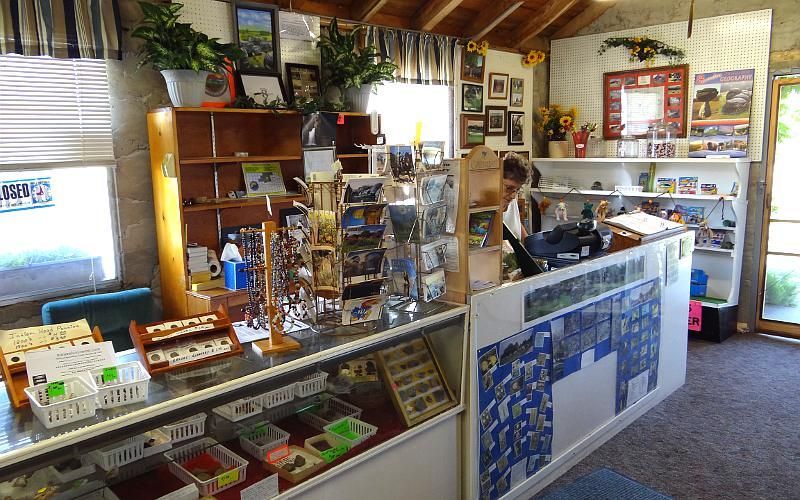
"Rock City is a park in north-central Kansas that features more than 200 spherical rock formations, some with diameters that are up to 27 feet (8 meters). The site, which covers an area that's about the size of two football fields, has three clusters of these examples of sandstone concretions," the Live Science says.
"The spheres, known as "cannonball concretions," formed about 100 million years ago during the Cretaceous Period, when areas of Kansas were covered by an inland sea, according to the Kansas Geological Survey. Over time, groundwater circulated through the sandstone and deposited a limy cement that grew outward in all directions from either calcite crystals or limy fossil fragments scattered throughout the sandstone. As the softer, uncemented portions of the sandy rock weathered away, the spheres of cemented sandstone remained.
"The concretions at Rock City show signs of cross-bedding — angled lines that formed in the sand as it was deposited, probably by water currents — according to the KGS. The concretions vary greatly in size and shape. Some are spherical, while others have truncated, flat tops. Some are loaf-shaped. They range in diameter from 10 to 20 feet (3 to 6 m) with an average diameter of 11.8 feet (3.6 m)."
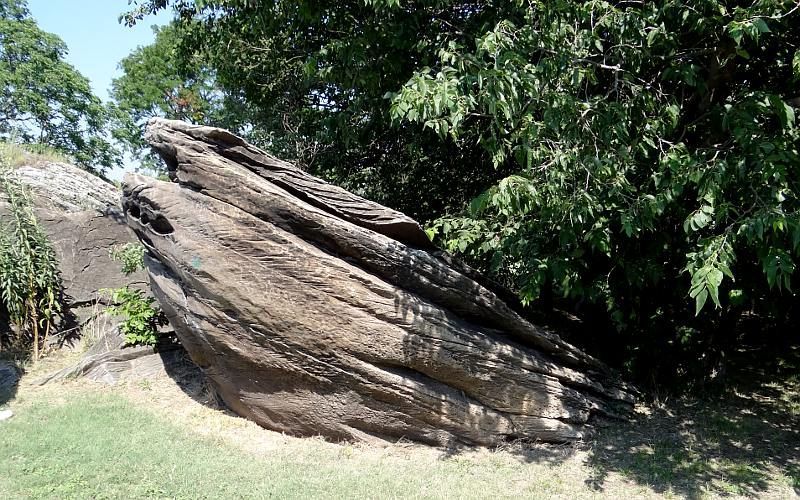
Photos: World’s Largest Cannonball Concretions: world record in Rock City, Kansas
(1-8) Facebook/Rock City Park (Eldon Clark)
(9-14) Kansas Travel
World’s Largest Cannonball Concretions: Rock City, Kansas
Address: 1051 Ivy Road, Minneapolis, Kansas, 67467, United States
Facebook: Rock City Park
Coordinates: 39.0909, -97.7356
website:
http://kansastravel.org/rockcity.htm

